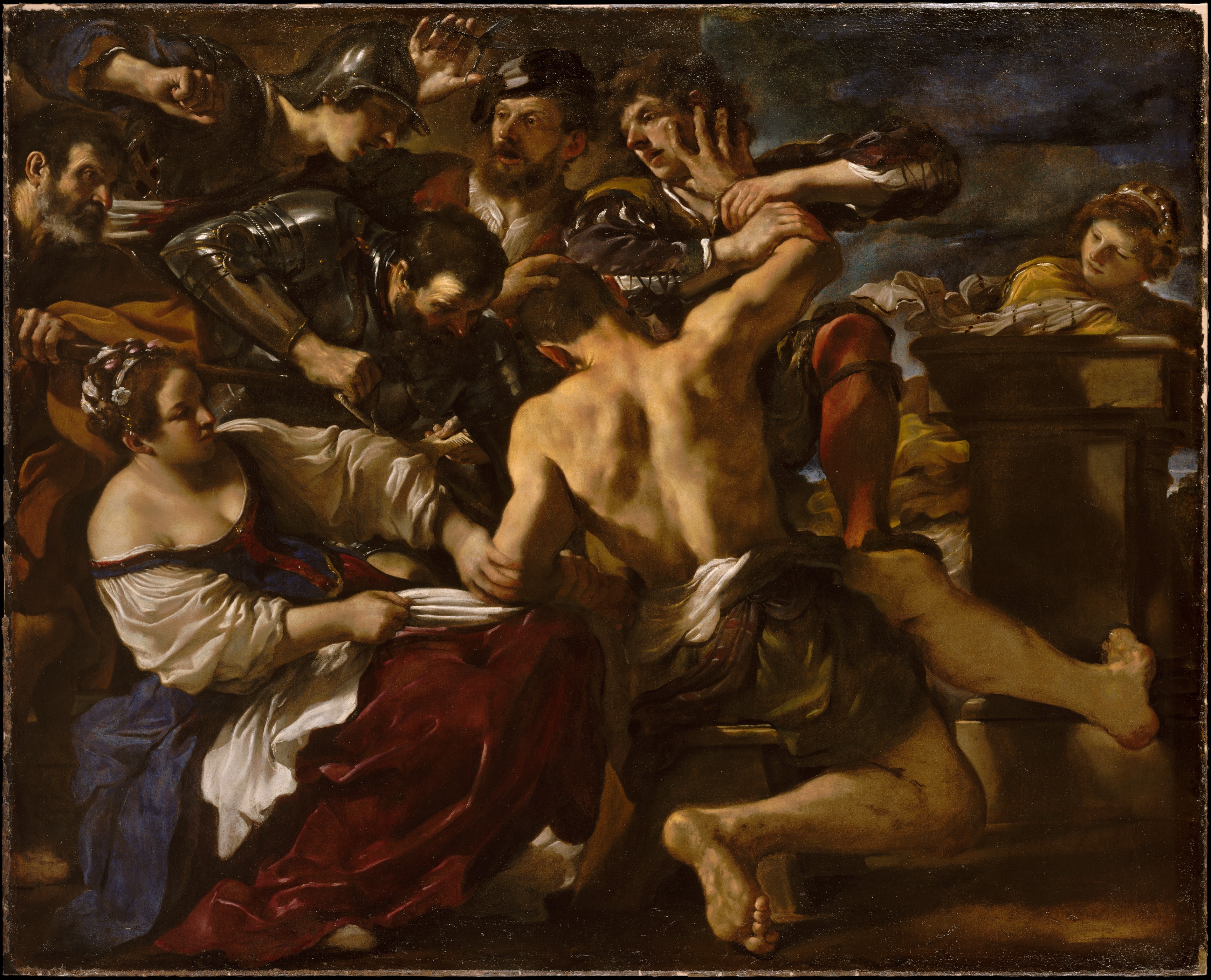

During my trip to the museum, I was overwhelmed by how big it was. It was very beautiful, although I have never felt good in large areas, since I’m always afraid of getting lost. I enjoyed it a lot, and it will always be memorable to me.
While I was there, I noticed some stark difference between the Renaissance and Baroque art. While both of them have an emphasis on naturalism in the human figure and a value of humanism, they portray this in different ways. Gerald David’s work, “The Rest on the Flight into Egypt” is very serene. The blues and greens of the artwork contribute to this serenity. It feels very stable, as though nothing bad could happen. Nothing in this shot indicates that it will end anytime soon. Mary has a calm nobility to her, as does the Baby, Jesus, which is actually odd, if one takes into account that He should not know how to regulate His emotions yet. This scene even seems more distant than it perhaps should.
On the contrast, Guercino’s “Samson Captured by the Philistines” is not serene in any way. The emotions spike upon looking at this one, by contrast to the other one. You can almost picture how the moment would continue to play out, were it to be ‘unfrozen’ from this ‘snapshot.’ It looks very unstable, and there is so much motion frozen in this painting. If you stare at it long enough, it almost seems to come to life and it makes you want to back away, so that no one will fall on you during the commotion.
Furthermore, while David’s work has one clear light across the entire scene, Guercino’s work has highlights on certain parts that draw your eye towards that instead of what is in the shadows. Also, while in David’s work, the faces of the Virgin and Child are both idealized to look perfect and flawless, Guercino’s work has people with specified faces that are imperfect and very human. There is even a man in the background of “Samson Captured by the Philistines” whose beard is graying, a sign of reality, not an idealized utopia. These differences in the works of art are characteristic of difference among ALL works of art between the Renaissance and the Baroque time periods.



